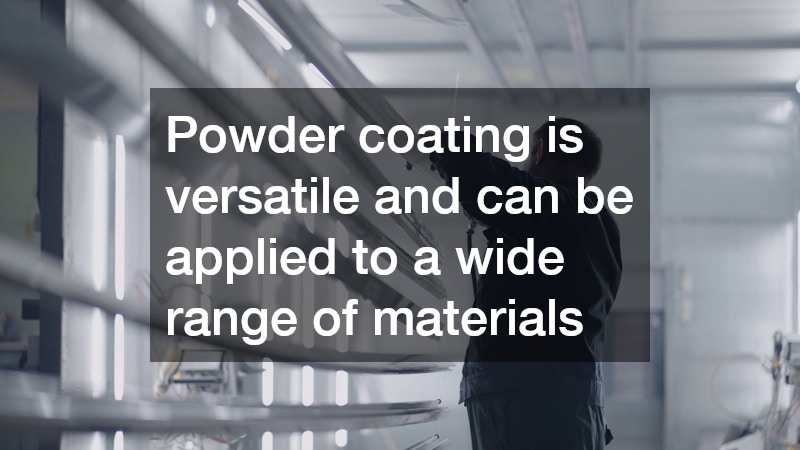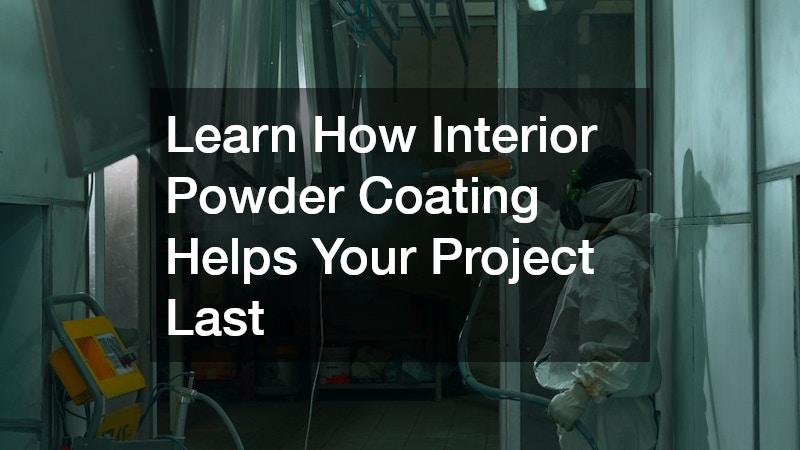Explore the benefits of interior powder coating and how it contributes to the longevity and durability of your projects.
What is Powder Coating and How Does it Work?
Powder coating is an advanced method of applying a protective finish to a wide variety of materials. Unlike traditional liquid coatings, powder coating applications involve a dry powder that is electrostatically charged and sprayed onto the surface to be coated.
This process allows for an even application of the coating, which adheres to the surface without running or sagging.
Once the powder is applied, it is then cured under heat to form a hard, durable finish. This curing process typically occurs in an oven where the coated object is heated to temperatures between 350°F and 400°F (about 180°C to 200°C). The heat causes the powder to melt, flow, and chemically react to create a robust and resilient coating.
The result of the powder coating process is a thick, hard finish that is more durable than conventional painting methods. It stands up to wear and tear, giving a long-lasting look and feel to any interior project. Additionally, one of the remarkable facts about powder coating is that it is available in a variety of colors and textures, making it a versatile option for many design needs.
What Are the Benefits of Using Interior Powder Coating?
One of the most significant benefits of interior powder coating is its exceptional durability. Unlike traditional paint, the hardened surface of powder coating resists scratches, chips, and corrosion. This inherent toughness makes it ideal for surfaces that experience frequent use or contact, such as furniture and fixtures.
Besides durability, powder coating offers aesthetic benefits as well. The finishing process allows for a wide selection of colors and textures, enabling designers and homeowners to achieve just the right look for any interior space. This versatility extends to the ability to produce finishes that mimic the appearance of metal, wood, or other materials.
Moreover, environmental considerations play a crucial role in the appeal of powder coating. Unlike traditional paints, powder coatings contain no solvents and produce negligible volatile organic compounds (VOCs). This makes powder coating a more environmentally friendly option, reducing harmful emissions without compromising quality or finish aesthetics.
How Does Powder Coating Compare to Traditional Painting?
When comparing powder coating to traditional painting, one of the most notable differences is the method of application. Powder coating uses an electrostatic process that ensures an even layer of coating is applied, while traditional paint often relies on brushes or rollers that can lead to uneven finishes.
Additionally, drying times for powder coating are significantly reduced due to the curing process. Traditional paint may require hours or even days to fully cure and achieve maximum durability, whereas powder-coated items can be ready for use in a fraction of that time. This efficiency can greatly impact project timelines and productivity.
Ultimately, the longevity of results is another area where powder coating excels. Studies indicate that powder-coated surfaces can last several years longer than traditionally painted surfaces, especially in high-usage environments. The difference in performance makes powder coating a more economical choice over the lifespan of the project.
What Materials Can Be Subject to Powder Coating?
Powder coating is versatile and can be applied to a wide range of materials, making it suitable for various interior applications. Common substrates for powder coating include metals such as aluminum, steel, and iron. It’s particularly popular for items like cabinets, railings, and hardware that require a durable finish.
In addition to metals, some plastics are also compatible with powder coating processes. Specialized powder coatings designed for plastics can be used to achieve a tough, decorative finish that resists wear, making it ideal for furniture and electronic casings. This compatibility opens up numerous opportunities for design innovation.
Lastly, the application of powder coating is not limited to furniture or fixtures. It extends to decorative elements such as light fixtures, decorative screens, and other custom accents that enhance interior spaces. The options are vast and allow for creativity and personalization in any project.
How Can You Ensure a Successful Powder Coating Project?
To achieve optimal results from powder coating, proper surface preparation is crucial. This often involves cleaning the surface thoroughly to remove any dirt, grease, or contaminants that might prevent adhesion. Techniques such as sandblasting or chemical cleaning can be employed to prepare the surface fully for powder application.
Furthermore, it’s essential to control the curing process accurately. Maintaining the correct temperature and duration during the curing stage is vital to ensure the powder melts and adheres properly to the surface. Mismanagement during curing can lead to inferior finishes and diminished durability.
Finally, another recommendation is to choose a reputable powder coating service or supplier. Quality materials and expert handling can significantly enhance the outcome of your powder coating project. Research and recommendations can help guide your choices to achieve the best results.
The importance of interior powder coating cannot be overstated. It offers a durable, aesthetically pleasing, and environmentally friendly solution for various projects. By considering its advantages and best practices, you can ensure that your future projects not only meet but exceed your expectations.


